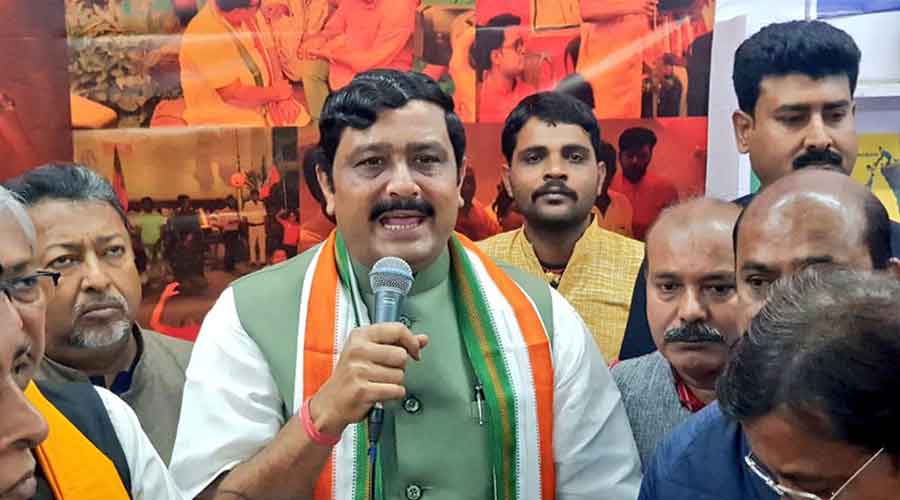Teamwork is crucial for electoral success. But the recent organizational changes within Team Bharatiya Janata Party, so to speak, shows that the BJP may have its task cut out, at least in Bengal. The elevation of Mukul Roy, once perched high on the pecking order of the Trinamul Congress — the BJP’s principal rival in poll-bound Bengal — to national vice-president has ruffled the feathers of the old guard. Mr Roy’s promotion, along with that of Anupam Hazra, another turncoat from the TMC, came about even as Rahul Sinha, a two-time state president of the party, found himself out in the cold. News of the reshuffle was greeted by unrest in the party rank and file in at least two places.
This simmering anger within the Bengal BJP demolishes some carefully nurtured myths. Even though it is a regimented, disciplined and dominant political force, the BJP, just like any other party, is not free from schisms. The rivalry between old members and new entrants to the parivar in Bengal has been exacerbated by the central leadership’s inclination to reward former TMC leaders with influential posts. This, in turn, is revealing. The BJP has always projected itself as a party with a difference. But its embrace of allegedly tainted leaders — there are serious allegations of financial irregularities against Mr Roy — threatens to dent this claim. One probable consequence of this churn would be the ceding of the moral high ground on the part of the party. This only goes to show that the BJP remains eager to barter morality for political imperatives. Mr Roy’s new-found prominence indicates another — deeper — problem. In spite of tall claims, the BJP remains vulnerable in terms of its organizational apparatus in many parts of Bengal. That explains its willingness to court Mr Roy whose expertise reportedly lies in organizational matters. Internal strife as well as patchy organization could pose significant hurdles even as the BJP prepares to wrest Bengal from Mamata Banerjee next year. But Mission Bengal, as is evident from the dissonance within the state unit as well as divergences in priorities between state and central leadership, may not run smoothly.











